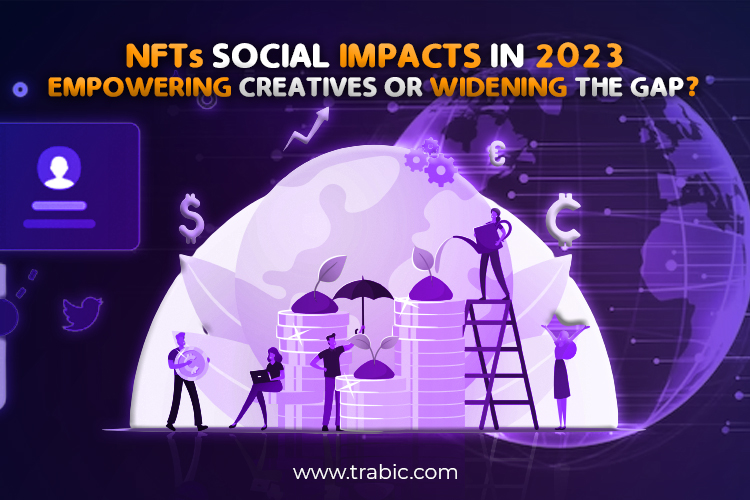NFTs are a unique digital asset that has evolved to become popular in recent years. Unlike interchangeable, fungible tokens such as Bitcoin or Ethereum, NFTs are unique and represent ownership of a specific piece of digital content. They are designed using blockchain technology, ensuring authenticity and preventing duplication or tampering.
NFTs have become particularly popular in art, offering the latest method for artists to monetize their work and establish provenance for digital art. NFTs can also represent ownership of other digital assets, such as music, videos, and tweets. If digital content is unique and verified on the blockchain can be turned into an NFT. The role of NFTs in the digital world is multifaceted.
First and foremost, NFTs offer a new way for creators to monetize their work. In the past, digital content creators struggled to monetize their work, as it was often copied and shared without their permission. With NFTs Marketing, creators can market their work straight to collectors and fans without relying on intermediaries or gatekeepers.
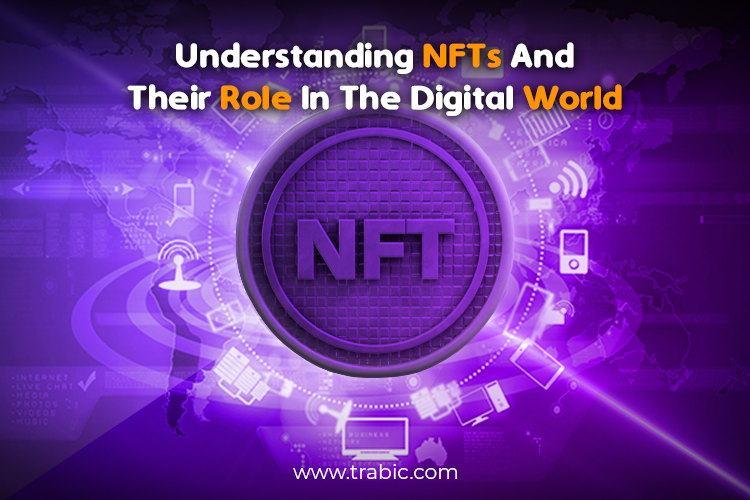
NFTs also offer a way to establish authenticity and provenance for digital content. In the past, it took work to verify the authenticity of digital content, as it could be easily copied and distributed. NFTs offer a way to establish ownership and provenance for digital content, making it easier to trace its history and ensure its authenticity.
Furthermore, NFTs can potentially revolutionize how we view ownership and value in the digital world. NFTs offer a new way to assign value to digital content, based on its uniqueness and authenticity, rather than its popularity or virality. This could have substantial implications for how we view digital art, music, and other types of content.
NFTs have an exciting role to play in the digital world. While there are concerns about their environmental impact and the potential for fraud and exploitation, their potential ability to offer a new source of revenue and recognition for creators, establish authenticity for digital content, and revolutionize how we view ownership and value make them a technology worth exploring.
The Positive Impact Of NFTs On Creators
NFTs, or non-fungible tokens, have significantly impacted creators, especially those working in digital content. NFTs have significantly impacted creators by providing a new source of revenue, recognition, exposure, and empowerment. While there are concerns about their environmental impact and the potential for fraud and exploitation, their ability to benefit creators in these ways makes them an exciting technology to explore.
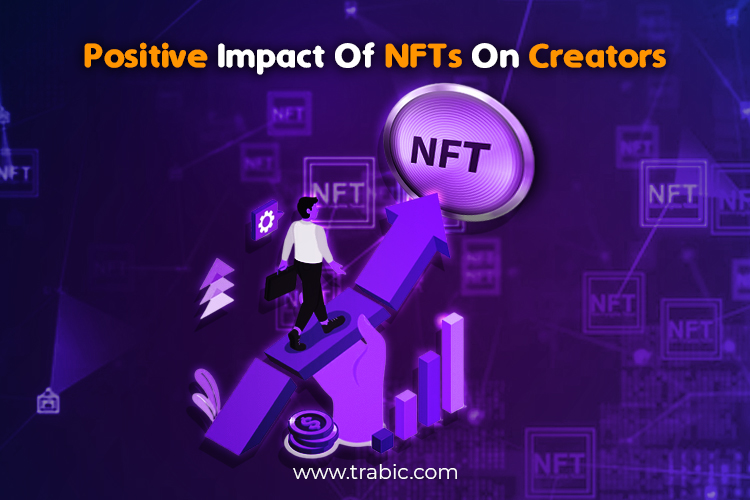
A New Source Of Revenue
NFTs, or non-fungible tokens, have provided creators with a new and exciting source of revenue. In the past, digital content creators often needed help to monetize their work, as it was often copied and shared without their permission. However, NFTs offer a new way for creators to directly sell their work to collectors and fans without relying on intermediaries or gatekeepers. One of the primary advantages of NFTs as a revenue source is that they allow creators to earn money from their work, even if it is shared widely on the internet.
NFTs represent a unique piece of digital content verified on the blockchain and can be bought and sold like any other asset. This means that creators can sell their work as an NFT and earn a percentage of the profits every time it is sold or traded.
Another advantage of NFTs as a revenue source is that they can provide creators with a way to establish the value of their work based on its uniqueness and authenticity rather than just its popularity or virality. This means that creators can earn more money for their work, valued based on its uniqueness and authenticity rather than just its popularity.
For example, a piece of digital art widely shared on social media might not be worth much money, but if it is sold as an NFT, its unique ownership can be established, and its value can be assigned accordingly. NFTs can also provide creators a way to monetize their work over the long term. When an NFT is traded, the creator can earn a percentage of the profits whenever it changes hands. This means that even if the creator sells the NFT for a one-time fee, they can constantly earn money over time as collectors buy and sell it.
NFTs have provided creators with a new and exciting source of revenue that has the potential to revolutionize the way they monetize their work. While there are concerns about their environmental impact and the potential for fraud and exploitation, the ability of NFTs to provide creators with a new revenue stream and establish the value of their work based on its uniqueness and authenticity makes them an exciting technology to explore.
Recognition And Validation
NFTs, or non-fungible tokens, have positively impacted creators by offering an innovative way for them to gain recognition and validation for their work. When creators create an NFT, they establish ownership of their digital content, which can be verified on the blockchain. This helps to establish the authenticity and provenance of the content, which can be necessary for establishing its value and importance in the art world.
By creating an NFT, creators can validate their creative work and demonstrate that it is a unique piece of digital content. This is especially important in the digital art world, where the authenticity and uniqueness of the artwork can be challenging to establish. NFTs offer a new way to assign value to digital content, based on its uniqueness and authenticity, rather than just its popularity or virality. This means that creators can earn more recognition and validation for their work, as it is valued based on its uniqueness and authenticity rather than just its popularity.
When an NFT is sold or traded, it often generates publicity and media coverage, which can help to raise awareness of the creator and their work. This boosted exposure can direct new opportunities for the creator, such as collaborations, commissions, and exhibitions, which can further validate and recognize their work.
Finally, NFTs can also give creators a sense of empowerment and control over their work. By creating an NFT, creators establish ownership of their work, which can be essential for protecting their intellectual property rights and controlling how it is used and distributed. This can promote creativity and innovation by giving creators more management over their work and its use.
NFTs have significantly impacted creators by offering new opportunities to recognize and validate their creative work. While there are concerns about their environmental impact and the potential for fraud and exploitation, their ability to validate creative work and recognize the value of digital content makes them an exciting technology to explore.
Increased Exposure
NFTs, or non-fungible tokens, have positively impacted creators by providing them a new way to increase their work exposure. When an NFT is sold or traded, it often generates publicity and media coverage, which can help to raise awareness of the creator and their work. This increased exposure can promote the creator’s work to a broader audience and lead to new collaborations, commissions, and exhibition opportunities.
NFTs have created a new community of collectors and fans interested in acquiring and owning unique digital content. Creators can use this community to build a following and promote their work to a broader audience. NFTs can also encourage sharing and social media engagement, as fans and collectors share their newly acquired digital assets with their networks. This can promote the creator’s work and build buzz around it. NFTs have produced a unique market for digital content, which was previously difficult to monetize.
Creators can use this new market to access new audiences and reach fans interested in something other than their work. NFTs can also help demonstrate the value of the creator’s work by assigning unique, verifiable ownership. This can help establish the creator’s work as valuable and vital in art, increasing exposure and opportunities for recognition and validation.
NFTs have significantly impacted creators by providing them with new opportunities for exposure and promotion of their work. While concerns about their environmental impact and the potential for fraud and exploitation, their ability to generate publicity, build a community, encourage sharing, access new markets, and demonstrate value makes them an exciting technology to explore for creators.
Establishing Value
NFTs, or non-fungible tokens, have positively impacted creators by offering a new way to establish value for their digital content. When creators create an NFT, they establish ownership of their digital content, which can be verified on the blockchain. This helps to establish the authenticity and provenance of the content, which can be necessary for establishing its value and importance in the art world.
By creating an NFT, creators can validate their creative work and demonstrate that it is a unique piece of digital content. This is especially important in the digital art world, where the authenticity and uniqueness of the artwork can be challenging to establish. NFTs offer a new way to assign value to digital content, based on its uniqueness and authenticity, rather than just its popularity or virality. This means that creators can earn more recognition and validation for their work, as it is valued based on its uniqueness and authenticity rather than just its popularity.
NFTs also offer an innovative way for creators to monetize their digital content, which was previously difficult. By assigning a unique token to their content, creators can sell it as a unique piece of digital art, music, or other digital content. By creating limited editions of their digital content through NFTs, creators can create a sense of scarcity and exclusivity, which can drive demand and increase the perceived value of their work.
NFTs have significantly impacted creators by providing new ways to establish value for their digital content. While there are concerns about their environmental impact and the potential for fraud and exploitation, their ability to establish ownership and authenticity, validate creative work, assign value based on uniqueness and authenticity, monetize digital content, and create scarcity and demand make them an exciting technology to explore for creators.
Negative Impact Of NFTs On the Environment
The environmental impact of NFTs is a significant concern that needs to be addressed. While some efforts are underway to mitigate the impact of NFTs on the environment, such as using renewable energy for blockchain transactions and developing more efficient hardware for mining, more must be done to address the issue. As the NFT’s popularity continuously grows, we must consider the environmental effect of these technologies and take adequate steps to decrease their negative impact on the planet.
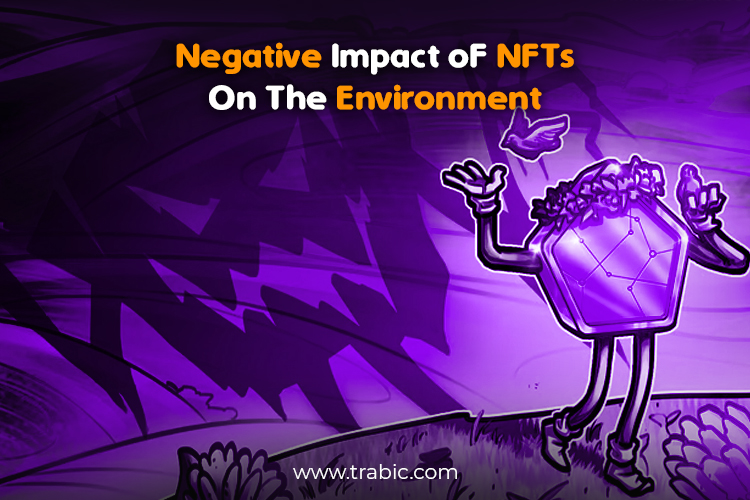
Energy Consumption
NFTs are produced and stored on the blockchain, which is a decentralized ledger that requires a significant amount of energy to operate. This energy consumption comes from the computers and servers that validate and record transactions on the blockchain. According to some estimates, the energy consumption associated with blockchain technology, including NFTs, is equivalent to that of actual countries, such as Argentina and the Netherlands. NFTs are typically created using the proof-of-work consensus algorithm, which requires much energy to solve complex mathematical problems to validate blockchain transactions.
However, there is a growing movement towards using the proof-of-stake algorithm, which is less energy-intensive and requires less computational power. The high energy consumption of NFTs also means they contribute to carbon emissions from generating electricity. Most electricity used for blockchain transactions, including NFTs, shows up from fossil fuel sources, such as coal and natural gas, contributing to climate change and negatively impacting the environment.
The energy-intensive process of mining cryptocurrencies, often used to create digital assets sold as NFTs, negatively impacts the environment. This happens due to the materials used to create the hardware for mining, such as graphics cards and specialized computer chips, requiring mining and manufacturing processes with significant environmental impacts.
Carbon Emissions
As mentioned earlier, the high energy consumption of NFTs comes from the computers and servers that validate and record transactions on the blockchain. Most of this electricity comes from fossil energy carriers, such as coal and natural gas, which release carbon emissions when burned.
NFTs are typically created using the proof-of-work consensus algorithm, which requires much energy to solve complex mathematical problems to validate blockchain transactions. This energy consumption adds to the carbon emissions and negatively impacts the environment. The energy-intensive process of mining cryptocurrencies, often used to create digital assets sold as NFTs, negatively impacts the environment.
This is because the equipment used to create the hardware for mining, such as graphics cards and specialized computer chips, require mining and manufacturing processes that release carbon emissions and have significant environmental impacts. NFTs are often sold and traded on online marketplaces, which can require the transportation of physical goods, such as computer equipment and packaging materials. The transportation of these goods can contribute to carbon emissions and negatively impact the environment.
Electronic Waste
The creation and validation of NFTs require specialized hardware, such as graphics cards and high-powered computers. Older hardware becomes obsolete and is discarded as the technology used to create and validate NFTs advances. This can lead to the generation of e-waste as more geriatric hardware is replaced with newer, more powerful devices.
When electronic devices end their usable life, they are mostly discarded and can be found in landfills. This can release harmful chemicals and heavy metals into the environment, negatively impacting human health and the environment.
The prevalence of NFTs has increased the demand for hardware and computing resources, leading to increased production and consumption of electronic devices. This can result in more e-waste generated as older devices are replaced with newer ones. To address the issue of e-waste, NFT creators and consumers need to consider the environmental impact of their actions. This can include using more energy-efficient hardware, extending the life of existing devices, and properly disposing of old hardware to ensure that it is disposed of in an environmentally reliable method.
Additionally, the circular economy and take-back programs can help reduce e-waste and promote sustainable consumption and production practices.
Environmental Impact Of Mining
Mining cryptocurrencies requires significant energy to power the computer hardware to solve complex mathematical algorithms. This energy consumption comes from burning fossil fuels, adding to greenhouse gas emissions and climate change. The energy-intensive process of mining cryptocurrencies also contributes to carbon emissions.
According to some estimates, the carbon emissions from Bitcoin mining alone are equivalent to those of a small country like New Zealand or Sri Lanka. The mining process requires specialized hardware, such as graphics cards and high-powered computers.
As this hardware becomes obsolete, it is often discarded and can contribute to the generation of electronic waste. Mining for cryptocurrencies demands a considerable amount of land to set up the necessary infrastructure. This can lead to deforestation, habitat destruction, and the displacement of local communities.
Cryptocurrency mining also requires significant water, which can be scarce in some regions. This can lead to a contest for water resources and negatively impact the environment and local communities.
Balancing The Positive And Negative Impacts Of NFTs
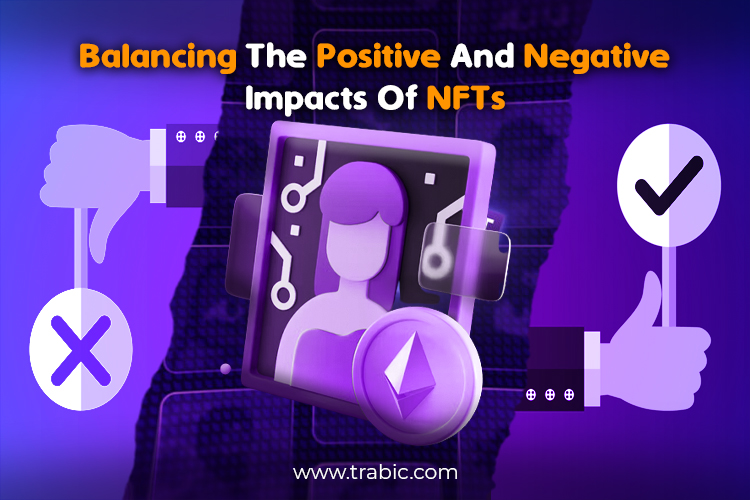
In conclusion, the social impact of NFTs is complex and multifaceted. While they offer new opportunities for creators and promote authenticity in digital content, significant environmental, economic, and ethical considerations must be considered. As we persist in exploring the potential of NFTs, it is essential to balance their positive and negative impacts to ensure a sustainable and equitable future for the digital world.
By understanding the social impact of NFTs, we can make better decisions about how we interact with this emerging technology. Whether you are a creator, collector, or simply interested in the future of digital ownership and value, exploring the potential of NFTs is an exciting and thought-provoking journey.
